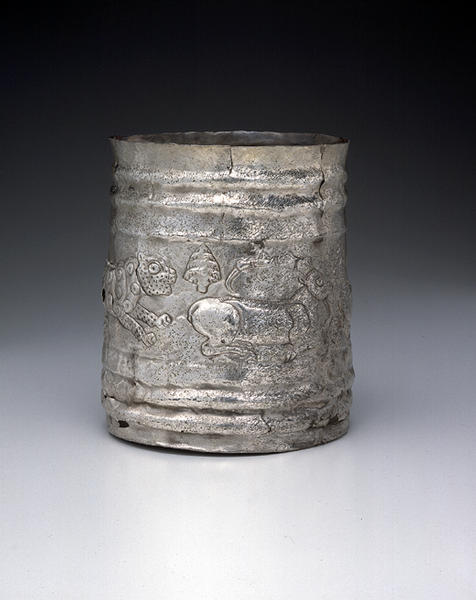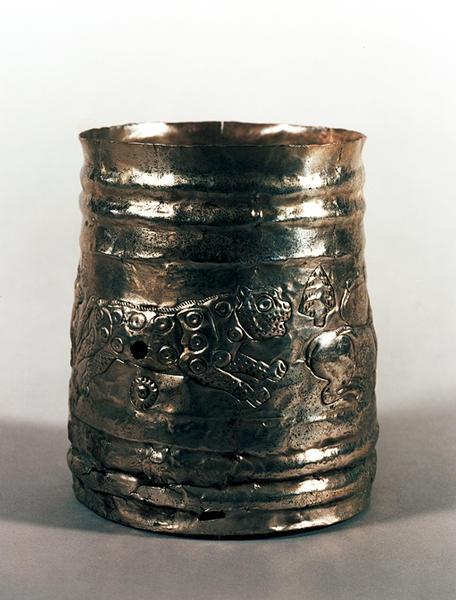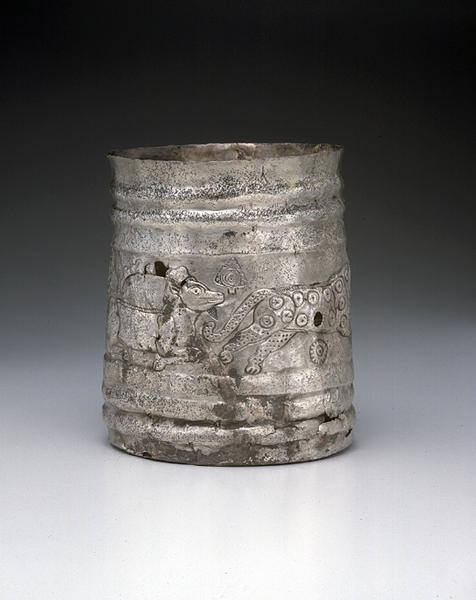Cylindrical cup with animals
- Western Central Asia
- 3rd millennium BC
- Silver
- H-12.1 D-10.3
Catalogue Entry(Bac#006)
Late 3rd‐early 2nd millennium B.C.
Silver
H. 11.0 cm, Dia. 9.5 cm
The torso surface of this silver cup is decorated with a leopard with legs spread as if running and a seated ibex. Plant forms are shown between these animals and designs which look like stars. Circles can be seen carved in the midst of the tree forms. At first glance this looks like a scene of a leopard hunting the ibex, and yet the seated ibex and leopard with mellow expression do not seem to construe a death attack scene. Ancient west Asia astronomy included both a leopard constellation and an ibex constellation, and around 4th millennium BC, these two constellations could be seen clearly in the spring equinoctial sky just before dawn. Thus it is thought that a combination of leopard and ibex probably symbolized the arrival of the new year. Further, in the Iranian highlands designs of the god spirit of the ibex grasping a snake have appeared since antiquity on seals, and this is thought to symbolize the god of the ibex ruling over the source of life, water. The combination of ibex, tree, and star design frequently can be seen on seals from Elam in southern Iran ca. 3,000 BC, and thus may have existed as an artistic expression in eastern Iran and western Central Asia under the influence of Elamite culture. In Mesopotamia in the 3rd millennium BC, the ibex constellation was divided into the Aquarius constellation and the Capricorn constellation, while in ancient western Asia, the Taurus and Leo constellations could be seen right after the sun set at the spring equinox and came to symbolize the new year. A cylindrical seal from ca. 3,000 BC excavated at the Tell Agrab site on the Diyala River region of Iraq has this same motif combining a tree with a circular form, there combined with other plant motifs and a battle scene between a lion and a bull. Thus we can imagine that these symbolic designs had some important role in the culture of that period.


